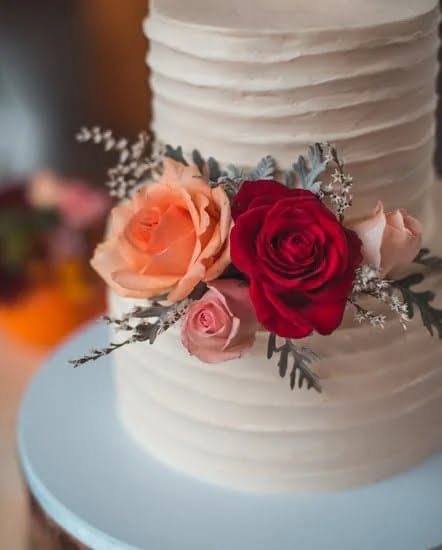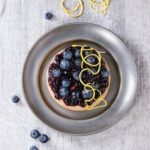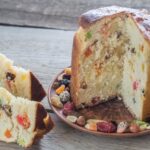Do you want to learn how to make icing for decorating a cake? Icing plays a crucial role in the art of cake decoration, transforming a plain cake into a masterpiece.
In this article, we will explore the different types of icing, ingredients needed for making icing, step-by-step guides for making various kinds of icing, tips for decorating with icing, and alternative icing options. Whether you are a beginner or an experienced baker, mastering the art of making icing is essential for creating beautifully decorated cakes.
Icing is more than just a sweet topping for cakes; it is an integral part of cake decorating. The type of icing used can greatly impact the overall look and taste of a cake. From classic buttercream to elegant fondant and delicate royal icing, there are various options to choose from when it comes to decorating a cake with frosting. Understanding the importance and versatility of icing in cake decoration is key to creating visually stunning and delicious treats.
Throughout this article, we will delve into the world of cake icing, exploring different types such as buttercream, fondant, royal icing, and ganache. We will also provide insights into the ingredients needed for making icing, step-by-step guides on how to make each type of frosting, tips for decorating with icing using various techniques and designs, as well as alternative options for those with dietary restrictions.
With our comprehensive guide to making and using icing, you’ll be able to bring your cake decorating ideas to life with homemade frosting.
Types of Icing
When it comes to cake decorating, the type of icing you use can make a significant difference in both the flavor and appearance of your finished product. There are several popular types of icing that are commonly used for decorating cakes, each with its own unique characteristics and uses.
Buttercream Icing
Buttercream icing is a classic choice for cake decorating, known for its rich and creamy texture. It is made from butter, confectioners’ sugar, milk or cream, and vanilla extract. This type of icing is versatile and can be easily colored with food coloring to achieve vibrant hues. Its smooth consistency makes it ideal for piping designs onto cakes or creating elaborate decorations.
Fondant Icing
Fondant icing is a pliable sugar paste that can be rolled out and draped over a cake for a flawless, smooth finish. It can also be used to create intricate shapes and designs, making it popular for wedding cakes and other special occasion desserts. Fondant can be flavored with extracts or oils and tinted with gel food coloring to match any color scheme.
Royal Icing
Royal icing is made from confectioners’ sugar and egg whites or meringue powder, giving it a hard, glossy finish once dried. It is commonly used for delicate decorations such as flowers, borders, and intricate piping work on cakes and cookies. Royal icing dries quickly, making it an excellent choice for intricate designs that require precise details.
Ganache
Ganache is a luxurious combination of chocolate and cream that can be used as both an icing and filling for cakes. It has a rich, velvety texture when spread onto cakes or piped into decorative accents. Ganache can also be whipped to create a lighter frosting or allowed to set into a firm glaze for a sleek finish on cakes.
Whether you’re looking for a buttery smooth texture (buttercream), the ability to sculpt intricate designs (fondant), the quick-drying properties needed for detailed work (royal icing), or the indulgence of rich chocolate (ganache), there’s an ideal icing option available to suit your specific cake decorating needs. Learning how to make each type of icing will allow you to bring your creative cake decorating ideas to life while adding delicious flavors to your baked creations.
Ingredients Needed for Making Icing
You can’t have a cake without icing, and the ingredients used to make it are essential for achieving the perfect flavor and consistency. Whether you’re making buttercream, fondant, royal icing, or ganache, there are staple ingredients you’ll need in your kitchen to create the perfect icing for decorating a cake.
Ingredients Needed for Making Icing
- Sugar: Granulated sugar is typically used in buttercream and royal icing recipes, while confectioners’ sugar, also known as powdered sugar, is the preferred choice for buttercream.
- Butter: Unsalted butter is often used in buttercream frosting for its creamy texture and flavor. It’s important to use room temperature butter to ensure it blends seamlessly with the other ingredients.
- Milk: Adding milk to your icing recipe can help achieve the desired consistency. You can use whole milk for a richer taste or opt for alternatives like almond or coconut milk for dairy-free options.
- Vanilla Extract: To add flavor to your icing, vanilla extract is a must-have ingredient. It enhances the overall taste of the frosting and complements the flavor of the cake layers.
- Food Coloring: While optional, food coloring allows you to customize the look of your icing. Gel-based colors are recommended as they won’t alter the consistency of your frosting.
Now that you have an understanding of the essential ingredients needed for making various types of icing, let’s dive into how these ingredients come together to make delicious icings through step-by-step guides on making buttercream, fondant, royal icing, and ganache.
Remember that these core ingredients will form the base of all icing recipes but may differ slightly depending on whether you’re making a specific type of frosting. The right combination of these elements will result in a decadent topping that will bring your cake decorating ideas to life.
Step-by-Step Guide to Making Buttercream Icing
Buttercream icing is a versatile and popular choice for decorating cakes due to its smooth texture and delicious taste. It can be easily customized with different flavors and colors, making it perfect for any occasion. But how do you make icing for decorating a cake? Here’s a step-by-step guide to making buttercream icing at home.
First, gather all the ingredients needed for making buttercream icing: confectioners’ sugar, unsalted butter, vanilla extract, and milk. It’s important to use room temperature butter to ensure a smooth and creamy consistency.
Next, in a mixing bowl, cream the butter until it is light and fluffy. Gradually add the confectioners’ sugar, one cup at a time, mixing well after each addition. This will help prevent lumps in the icing. Then, add the vanilla extract for flavor and mix until combined.
To achieve the desired consistency of the icing, gradually add milk while continuing to mix until the icing is smooth and creamy. If you want colored icing, this is the time to add food coloring of your choice. Mix well until the color is evenly distributed throughout the icing.
With these simple steps, you can easily make delicious buttercream icing at home to elevate your cake decorating skills. Experiment with different flavors and colors to create stunning designs and bring your cake decorating ideas to life.
Step-by-Step Guide to Making Fondant Icing
Making fondant icing is a popular choice for cake decorating due to its smooth and sleek finish. To make your own fondant icing at home, you will need the following ingredients: marshmallows, water, confectioners’ sugar (also known as powdered sugar), and vegetable shortening.
First, begin by melting the marshmallows in a microwave-safe bowl with a splash of water. Stir occasionally until the mixture is smooth and creamy. Next, gradually add in the confectioners’ sugar while kneading the mixture with greased hands or on a clean surface coated with vegetable shortening to prevent sticking.
Continue adding and kneading in more confectioners’ sugar until the fondant becomes stiff but pliable. Once you have achieved the right consistency, wrap the fondant in plastic wrap and let it sit at room temperature for at least 8 hours to allow it to set and mature.
When it comes to coloring your fondant icing, food coloring gels are recommended as they won’t alter the consistency of the fondant. You can also add flavorings such as vanilla extract or almond extract for an extra layer of taste. Once your fondant is ready, roll it out on a clean surface dusted with cornstarch or confectioners’ sugar and use it to cover your cake for a professional-looking finish.
Overall, making fondant icing at home allows you to customize the flavor, color, and thickness of your icing to perfectly complement your cake decorating ideas. With some patience and practice, you can achieve beautifully decorated cakes using homemade fondant icing.
Step-by-Step Guide to Making Royal Icing
Royal icing is a versatile and popular choice for decorating cakes, cookies, and gingerbread houses. It dries to a hard, glossy finish, making it perfect for intricate designs and details. Here’s a step-by-step guide to making royal icing for your next cake decorating project.
Gather Your Ingredients
To make royal icing, you will need egg whites or meringue powder, powdered sugar, and water. If you’re using fresh egg whites, be sure to use pasteurized eggs to reduce the risk of foodborne illness. Meringue powder is a convenient alternative that provides the same stability and texture as fresh egg whites without the safety concerns.
Beat the Ingredients
In a clean mixing bowl, combine the egg whites or meringue powder with the powdered sugar. Begin beating on low speed, gradually adding water to achieve the desired consistency. Continue beating on high speed until the icing forms stiff peaks. This process typically takes 5-7 minutes with an electric mixer.
Adjusting Consistency
The consistency of royal icing is key to its performance in decorating. For piping outlines and details, the icing should be thick enough to hold its shape without spreading. For flooding or filling in areas, thin the icing with additional water until it reaches a smooth, pourable consistency. Be mindful not to add too much liquid at once as this can quickly make the icing runny.
By following these simple steps and practicing your piping techniques, you can create beautiful designs using royal icing for your cake decorating endeavors.
Step-by-Step Guide to Making Ganache
Ganache is a versatile and delicious icing that can be used for both filling and covering cakes. It is made from just two simple ingredients: chocolate and heavy cream. The result is a smooth, glossy, and rich icing that adds a touch of elegance to any cake. In this step-by-step guide, we will walk you through the process of making ganache so you can elevate your cake decorating skills.
To make ganache, you will need high-quality chocolate and heavy cream. The ratio of chocolate to cream will depend on the desired consistency of the ganache. For a thicker ganache that can be used as a filling, use more chocolate. For a thinner ganache that can be used as a glaze, use more cream.
Begin by chopping the chocolate into small, uniform pieces and placing it in a heatproof bowl. Then heat the heavy cream in a saucepan until it just begins to simmer. Pour the hot cream over the chopped chocolate and let it sit for a few minutes to allow the chocolate to melt. Gently stir the mixture until it becomes smooth and glossy. Your ganache is now ready to be used for filling, frosting, or glazing your cake.
Once you have mastered the art of making ganache, you can add flavorings such as vanilla extract or liqueurs to customize the taste. Additionally, experimenting with different types of chocolate, such as dark, milk, or white chocolate, can lead to unique flavor combinations for your cakes. With this simple yet decadent icing in your repertoire, you’ll be able to take your cake decorating skills to the next level and impress your friends and family with professional-looking confections.
Tips for Decorating With Icing
Decorating a cake with icing can truly elevate the overall look and taste of your baked creation. Whether you are a beginner or a seasoned baker, mastering different piping techniques, using various nozzles, and creating unique designs can take your cake decorating skills to the next level. In this section, we will explore some valuable tips for decorating with icing that will help you achieve professional-looking results.
Piping techniques play a crucial role in cake decorating as they allow you to add texture and dimension to your cakes. Some popular piping techniques include shell border, rosettes, basketweave, and writing. To master these techniques, practice is key. Start by using a piping bag filled with icing and practicing on parchment paper before moving on to your actual cake.
Using different nozzles is another way to create eye-catching designs with icing. Nozzles come in various shapes and sizes, each producing distinct patterns when the icing is piped through them. Some common nozzle shapes include round, star, leaf, petal, and drop flower. Experimenting with different nozzles will give you more options for creating beautiful decorations on your cakes.
Creating unique designs with icing is limited only by your imagination. From simple polka dots to intricate lace patterns, there are countless ways to make your cakes stand out. Consider using stencils or molds to create precise designs or freehand drawing for a more personalized touch. Don’t be afraid to try new ideas and experiment with different design elements to find what works best for you.
Incorporating these tips into your cake decorating process will undoubtedly enhance the visual appeal of your creations. With practice and creativity, you can turn plain cakes into stunning works of art that are sure to impress any audience.
Alternative Icing Options
For individuals with dietary restrictions or those who prefer to use alternative ingredients, there are several options available when it comes to making icing for decorating a cake. Vegan, gluten-free, and dairy-free icing recipes provide a way for everyone to enjoy delicious and beautifully decorated cakes without compromising their dietary needs.
When it comes to vegan icing, traditional butter is replaced with non-dairy alternatives such as vegetable shortening or margarine. In place of cow’s milk, plant-based milk such as almond, soy, or oat milk can be used. Additionally, ingredients like powdered sugar and vanilla extract are commonly used in vegan icing recipes to achieve the desired sweetness and flavor.
Gluten-free icing recipes often call for ingredients that are free from wheat and other gluten-containing grains. For this type of icing, it is essential to use certified gluten-free powdered sugar and other flavorings to ensure that the final product is safe for individuals with celiac disease or gluten sensitivities.
In dairy-free icing recipes, traditional butter and milk are substituted with non-dairy alternatives. Coconut oil can be used as a replacement for butter, while coconut milk or almond milk can be used instead of regular cow’s milk. By making these simple swaps, it is possible to create delicious dairy-free icing that is suitable for those with lactose intolerance or dairy allergies.
Overall, by following alternative icing recipes such as vegan, gluten-free, and dairy-free options, individuals can still create beautifully decorated cakes that cater to different dietary preferences and requirements. Whether it’s a birthday celebration or special event, everyone can enjoy a slice of cake topped with delicious and personalized icing.
Conclusion
In conclusion, learning how to make icing for decorating a cake opens up a world of possibilities for creating beautiful and delicious desserts. Whether you choose to work with buttercream, fondant, royal icing, or ganache, the key is to experiment and find the right texture and flavor that suits your preferences. With just a few simple ingredients like sugar, butter, milk, vanilla extract, and food coloring, you can create a wide range of icing options to suit any occasion.
Furthermore, by following the step-by-step guides provided in this article for making different types of icing, you can gain the confidence to embark on your cake decorating journey. Understanding techniques such as piping and using different nozzles will enable you to express your creativity and bring your cake decorating ideas to life.
Additionally, the inclusion of alternative icing options such as vegan, gluten-free, and dairy-free recipes ensures that everyone can enjoy beautifully decorated cakes regardless of dietary restrictions.
Overall, making homemade icing for decorating a cake allows you to infuse love and personal touch into your creations. Whether it’s for a birthday party or a wedding celebration, the joy of seeing your beautifully decorated cake brings smiles to everyone’s faces is a reward in itself. So go ahead – experiment with flavors and designs – let your imagination run wild as you explore the art of cake decorating with homemade icing.
Frequently Asked Questions
What Is the Best Icing to Use for Cake Decorating?
The best icing to use for cake decorating depends on the desired effect and taste. Buttercream is versatile and easy to work with, while royal icing is great for intricate designs and fondant gives a smooth finish.
How to Make the Perfect Cake Icing?
Making the perfect cake icing requires balancing the right proportions of butter, sugar, and flavorings like vanilla or cocoa. It’s essential to beat the ingredients until light and fluffy for a smooth texture.
What Is the Simplest Type of Icing?
The simplest type of icing is powdered sugar glaze, which only requires mixing powdered sugar with a small amount of liquid, such as milk or lemon juice, until smooth. This quick and easy icing can be drizzled over cakes and pastries for a simple finish.

Welcome to our cake decorating blog! My name is Destiny Flores, and I am the proud owner of a cake decorating business named Cake Karma. Our mission is to provide delicious, beautiful cakes for all occasions. We specialize in creating custom cakes that are tailored specifically to each customer’s individual needs and tastes.





